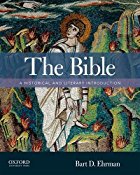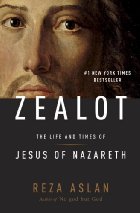Jerry Coyne has posted Resa Aslan’s response to claims that the Muslim religion is inherently bad. He labales Aslan as “the Great Muslim Apologist”.
Listening to the two sides of this discussion I’m pushed to try to understand why they appear not to be truly communicating with each other. I have in the past argued the same points as Aslan makes. So watching Aslan is somewhat like watching myself.
It forces me to ask what’s gong wrong here.
Listening to the two sides of this discussion I’m pushed to try to understand what is going wrong. I have in the past argued the same sorts of clearly empirical facts as Aslan presents:
- 1.5 billion Muslims cannot be all painted with the same brush — terrorism and violence, female genital mutilation, denying women’s rights such as not allowing them to drive — since Muslim countries like Turkey and Indonesia cannot be compared with Saudi Arabia and Somalia.
- Muslim majority countries have elected seven women heads of states.
- In Christian countries like Eritrea and Ethiopia we find nearly 90% and 75% prevalence of female genital mutilation.
- Women participate fully in political and educational opportunities in Indonesia, Malaysia, Bangladesh, Turkey, and others.
- Buddhists massacre Muslims in Myanmar (Burma).
But as we see in the video arguing such facts obviously does not easily persuade. The problems are still seen as Muslim problems.
Others like Jerry only see Resa as “the Great Muslim Apologist”.
After reading Fighting Words: The Origins of Religious Violence by Hector Avalos I have been trying to think through the question afresh. A response by Hector Avalos to one of my posts is pertinent. In response to a crude interpretation of my own Avalos replied as follows. The caps are Avalos’s and the bolding and is mine: Continue reading “Muslim Violence: Understanding Religion and Humanity”



 There is an interview with Reza Aslan where he really does address details of his argument in Zealot: The Life and Times of Jesus of Nazareth more than his “suspect motives as a Muslim” as we heard in the Fox interview. There is some discussion of his background, too, but not in the Fox manner.
There is an interview with Reza Aslan where he really does address details of his argument in Zealot: The Life and Times of Jesus of Nazareth more than his “suspect motives as a Muslim” as we heard in the Fox interview. There is some discussion of his background, too, but not in the Fox manner.

